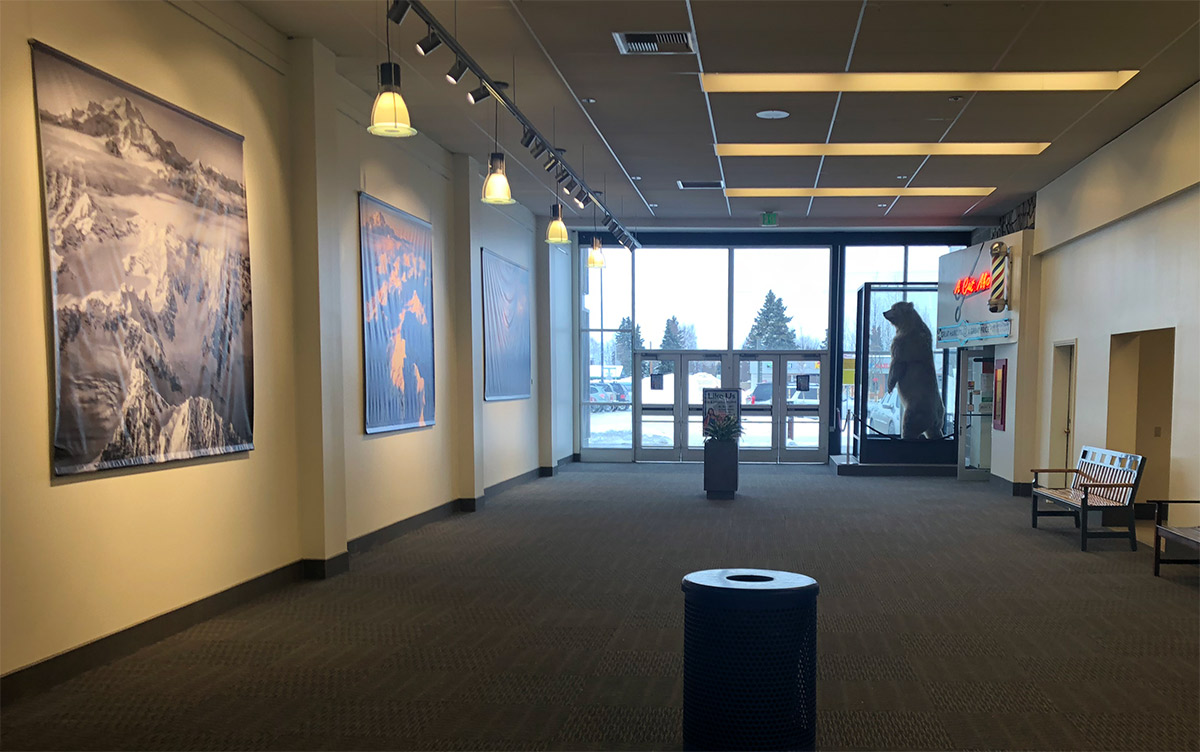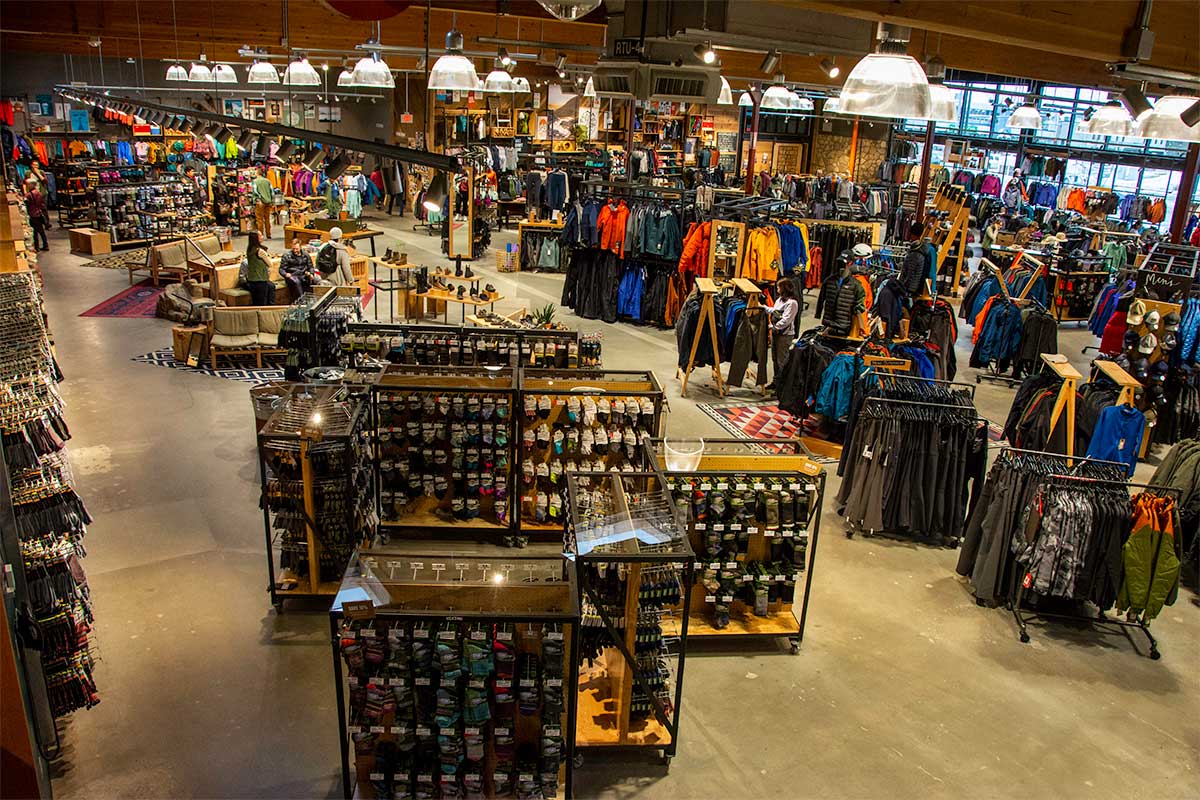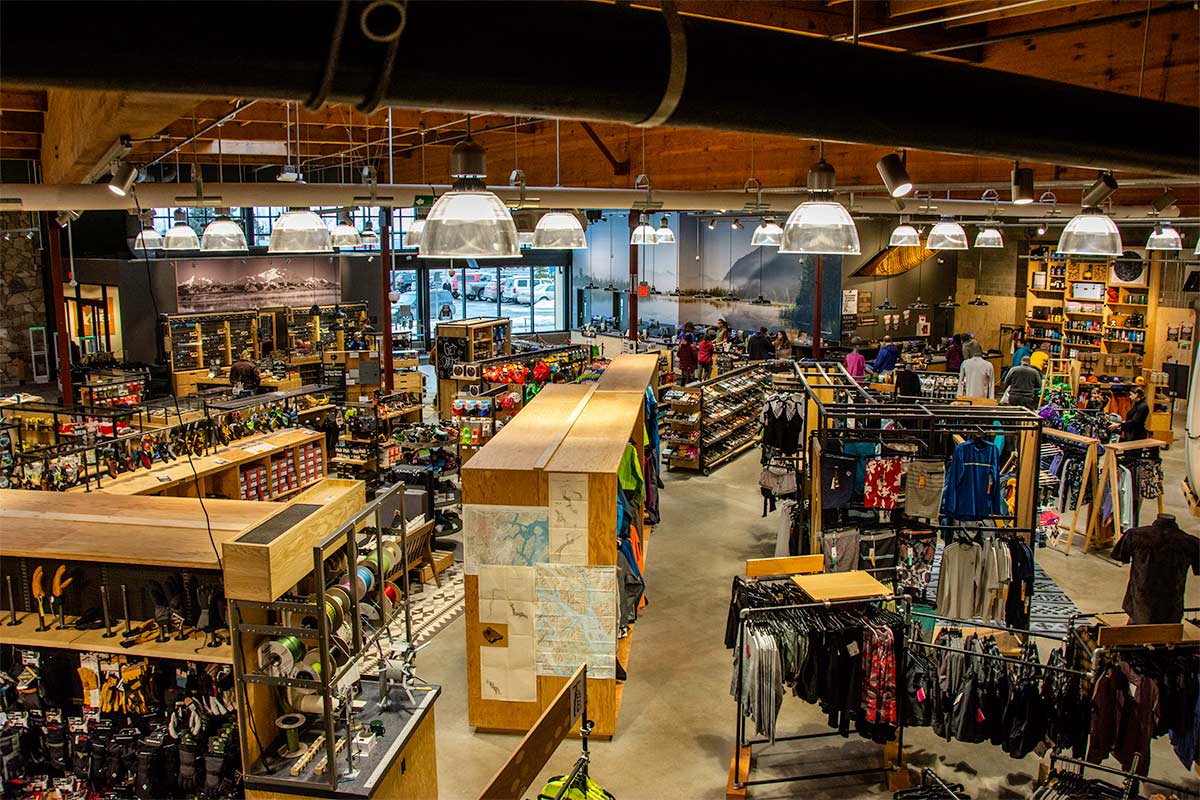espite losing two key retail anchors, it’s full sail ahead for Anchorage’s Midtown Mall (formerly and not-so-formerly known as the Mall at Sears, but more on that later).
When Carrs Safeway closed its mall location in 2015, followed by the departure of namesake Sears in 2018, Anchorage shoppers collectively winced and pondered the future of the retail hub that, according to a 2014 report from the August Group, drew the highest concentration of shoppers per 1,000 square feet compared to Anchorage’s other large malls: the Dimond Center and 5th Avenue Mall.
Meanwhile, economists contemplated the future of the city’s retail sector amidst the state’s economic recession. After the mall eclipsed its fiftieth anniversary in 2018, however, things began to look different—quite literally.
It started in January 2019 as recreation outfitter REI moved from a little more than a mile down the road into the mall’s 50,000-square-foot western end that once housed Carrs. Shortly after, the eastern end that formerly housed Sears welcomed two new tenants and a familiar neighbor. National-brand music store Guitar Center set up shop, and Planet Fitness moved in west of Guitar Center and Nordstrom Rack (which opened its doors in 2015). Then Carrs made its return (reopening after a four-year absence) in the mall’s southeast anchor space. As of publication, the most recent big brand addition is Providence Express Care, a health clinic that provides same-day appointments.
Seritage Property Growth, the New York-based firm that purchased Sears’ holdings, owns the eastern end of the mall that houses Carrs, Guitar Center, Providence Express, Planet Fitness, and Nordstrom Rack; the remainder of the mall is owned by Carr-Gottstein Properties.
Even after saying goodbye to two big brands in a span of four years, the Midtown Mall ended the decade with a total of five significant additions: three national brands, a prominent healthcare provider, and a grocery chain that has long been a household name in Alaska.
And all this activity came with a major facelift.
The mall’s curb appeal makes a world of difference when it comes to attracting mallgoers. And its new anchor tenants took full advantage of that curb appeal by investing heavily to make sure their exteriors reflect their remodeled interiors.

The result is an open-floor layout from end to end, with an interior aesthetic that references a ski chateau while remaining a practical space for an outdoor recreation retailer. As was the case with the previous tenant, REI’s eastern wall opens into the Midtown Mall’s main corridor—but what’s new is a row of wall-mounted bicycle racks, ideal for REI’s (literally) on-the-go customer base.
Neeser Construction executed the brightly lit storefronts designed by RIM Architects. Additionally, the parking lot’s layout and condition were improved, and trees and greenery were planted around the lot.
The new Carrs space features a bright, modern exterior and 65,650-square-foot interior, which now includes a Kaladi Brothers coffee shop. The remodel accommodates all the usual Carrs amenities including a butchery, seafood, deli, pharmacy, and Oaken Keg liquor store. Designers took advantage of the grocer’s location in the mall to include sit-down dining at the deli that extends outside the store and into a section connecting it to the rest of the mall.
Just behind Guitar Center and Nordstrom Rack is a 14,850-square-foot Planet Fitness. Though it lacks the indoor mall access that Carrs and Guitar Center have, it’s a simple stroll to one of the mall’s outdoor entrances.
There’s a lesser known second level of leasing space available on this side of the mall, which Sears used for departments such as optical and mattresses. The second level comprises a total of 31,000 square feet.
Ward W. Wells
“I think in the beginning Seritage was just kind of doing their own thing and that’s when they opened Nordstrom Rack,” Musso says. “And then with the whole negative feedback from all the customers not being able to access it, we started working with [Seritage] and decided to do the hallway for easier access and it’s been mutually beneficial.”
New access and walkability require another understated but nonetheless crucial element: a means of wayfinding.
Musso believes that as the mall continues to generate returning visitors and increased foot traffic, maneuvering through the mall will become simpler. She also has her fingers crossed that the new branding—Midtown Mall—will catch on with shoppers, though she understands it may take a while. “People are like, ‘I don’t care what you say. I’m calling it the Sears Mall,’” she laughs. “And I’m like, you know what, I’m glad that you love us that much! It is so ingrained in you that you want to call it the Sears Mall? Go ahead. I don’t care.”
Midtown Mall
Out of the twenty-seven total spaces in the mall, Musso says just eight are still available, including the former food court and large retail spaces between 3,000 and 5,000 square feet where national brands such as Famous Footwear and Payless ShoeSource used to operate.
Along with the handful of open retail leasing spaces, a lingering question mark hovers over the future of the former food court space, which cleared out last year. According to Musso, there have been discussions about possibly replacing it with a single new restaurant rather than bringing someone in to manage another food court. Talks are preliminary.
While it’s true the Midtown Mall relies on national brand anchor tenants to help draw consumers in, it is also important to the mall to support local businesses, either through leasing storefronts to them or providing opportunities to rent kiosk space. “We try to make it easy for people to come in and do new business ideas,” says Musso. “They can come in and start in a kiosk and sometimes hopefully the goal is that they evolve into a full-time tenant.” She cites Brow Chica as an example; the eyebrow salon started as what the mall calls a “temp tenant,” a kiosk location in the mall’s corridor. After its initial success as a temp tenant, Brow Chica moved into a long-term leasing unit in the mall and did so well that it eventually expanded to a second location in south Anchorage.


That kind of activity is also a positive sign for the local economy at large. In its most recent 3-Year Economic Outlook report, Anchorage Economic Development Corporation (AEDC) notes that the construction and renovation of Midtown Mall’s anchors will be helpful in offsetting job losses in the city’s retail sector. A combined total of $30 million was spent on the west and east anchors—approximately $10 million on the REI project and more than $20 million from Seritage on the Carrs/Guitar Center/Planet Fitness side. Those numbers translate to a long-term investment in the mall’s future.
The 2018-2019 construction activity at the Midtown Mall is just another chapter in the mall’s history of resiliency. Alaskans will remember that in the early 2010s, the then-Mall at Sears welcomed tenants like Burger-Fi and local coffee favorite SteamDot into space constructed for them. As it enters this new decade with a trajectory toward more things modern and a fondness for its past, Musso believes that the future looks bright.
Before the end of 2019, when the mall’s anchor tenants finished their renovations and got down to business, vacant leasing spaces served as a solemn reminder of a declining retail sector. Now it’s easy to see them in a different light: a sign of positive momentum and good things to come in Anchorage. ![]()